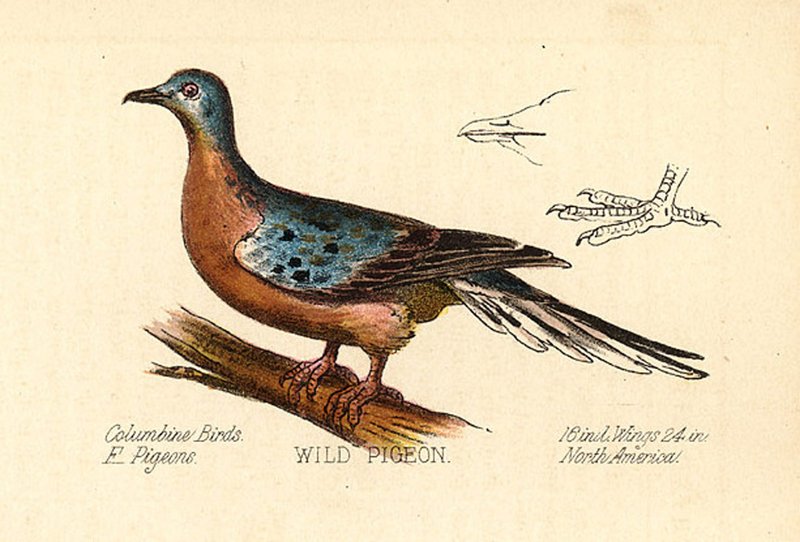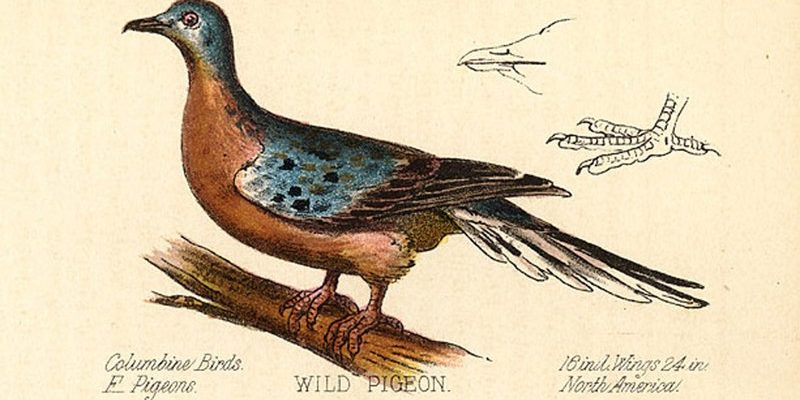
The tale of the passenger pigeon isn’t just about a bird—it’s a cautionary tale that teaches us about wildlife conservation, the impact of human activity, and the fragility of ecosystems. So, grab your favorite coffee, and let’s take a journey through time to explore how this iconic bird—once so plentiful—vanished from our world.
The Passenger Pigeon: A Deep Dive into Its Origins
The passenger pigeon, scientifically known as Ectopistes migratorius, was native to North America. It was a stunning bird, sporting a mix of blue-gray feathers and a distinctive reddish breast. These birds were social creatures, living in massive colonies that could sometimes stretch for miles. To put it in perspective, just imagine the sound of millions of wings fluttering together, a symphony of nature echoing through forests and over fields.
Historically, passenger pigeons were migratory birds. They followed a seasonal pattern, moving south in the winter and returning north to breed in the spring. Their mating rituals were quite impressive too. They danced and called to each other, creating elaborate displays that attracted potential mates. You might be wondering how they could gather in such large numbers—well, their colonies functioned almost like social networks, fostering community and cooperation in foraging for food.
However, the question arises: how did such a thriving species come to be? It’s fascinating to think about how their populations swelled due to their ability to adapt to vast landscapes, from dense forests to open fields. They feasted on acorns, beech nuts, and other seeds, which were plentiful in their habitats. This adaptability helped them develop a robust population, easily sidestepping the challenges that many other species faced.
The Rise to Abundance
Passenger pigeons weren’t just a common sight; they were a significant part of the ecosystem. Their populations were so immense that they could darken the sky for hours as they flew overhead. Estimates suggest that at one point, there could have been three billion passenger pigeons in North America! Yes, you read that right—three billion.
This abundance wasn’t just impressive; it had real ecological implications. As these birds foraged and nested, they played a crucial role in shaping their habitats. Their droppings helped fertilize the soil, promoting the growth of the very trees and plants they depended on for food. Essentially, they were a vital part of a healthy ecosystem. It’s a reminder of how interconnected nature can be.
But let’s not overlook the human aspect. In the 19th century, passenger pigeons were heavily hunted, not for sport alone but also for food. They became a source of cheap meat, feeding the masses in rapidly growing cities. Suddenly, the balance of nature began to tip.
The Impact of Overhunting
As the demand for passenger pigeons increased, so did the hunting pressure. Market hunters, equipped with guns and traps, decimated entire flocks. It’s said that they could kill thousands in just a single day. You might be wondering what this intense hunting looked like in practice. Imagine long lines of hunters, gathering around a roosting area, waiting for the night when the pigeons would settle down to rest.
This widespread hunting was fueled by a booming economy. The growing cities needed food, and passenger pigeons became an easy target. Unfortunately, this didn’t just affect the passenger pigeons; it disrupted entire ecosystems. With fewer birds around, the natural cycle of seed dispersal began to suffer, leading to unintentional consequences for the flora they depended on.
By the late 1800s, reports of dwindling numbers began to surface. The once-mighty flocks were becoming a rare sight. Conservationists at the time began to raise alarms about the plummeting population, recognizing that without intervention, the passenger pigeon might vanish altogether.
The Turning Point: From Abundance to Extinction
The final blow to the passenger pigeon came during the late 19th and early 20th centuries. By this point, the once-thriving population had plummeted drastically. What’s heartbreaking is that many people didn’t see the value of these birds until it was too late. The last known wild passenger pigeon was shot in 1914, and by then, it was already a rare occurrence to see them in the skies.
One of the most famous passenger pigeons, named Martha, was the last of her kind. She lived in the Cincinnati Zoo and became a symbol of the extinction crisis. When she passed away, it marked the end of a species that had once flourished. It’s a somber reminder of the fragility of life and how human actions can steer an entire species toward extinction.
What’s truly fascinating—and tragic—is that the passenger pigeon was so adaptable. It thrived for thousands of years, yet it couldn’t withstand the pressure humans placed upon it. This story urges us to consider our impact on the planet and the species we share it with.
Lessons Learned from the Passenger Pigeon
The extinction of the passenger pigeon serves as a powerful lesson for our time. Many conservationists argue that it highlights the importance of biodiversity and the need to protect other species from a similar fate. We’ve witnessed other animals teetering on the brink of extinction, and the lessons from the passenger pigeon are more relevant today than ever.
Programs aimed at conservation and sustainable hunting have become more prominent as a direct result of the lessons learned from the story of the passenger pigeon. For instance, habitat restoration efforts and wildlife protection laws are now in place to prevent overhunting and ensure that species have the opportunity to thrive in their natural environments.
You might be wondering what you can do to contribute to this cause. Supporting wildlife conservation groups, engaging in responsible tourism, and educating others about environmental issues are all ways we can honor the memory of the passenger pigeon.
Reflecting on the story of the passenger pigeon isn’t just about remembering an extinct species; it’s about acknowledging our role in shaping the future of the planet. The passenger pigeon was once a symbol of abundance, a creature that danced through the skies in flocks so large they could blanket the sun. Now, its extinction serves as a poignant reminder of what can happen when nature is pushed to its limits.
As we continue to navigate challenges in biodiversity and conservation, let’s carry the lessons of the passenger pigeon with us. It’s crucial that we work together to protect the wildlife that still graces our planet. After all, the health of our ecosystems directly affects our own lives. Thank you for joining me on this journey through history, and let’s hope we learn to appreciate and protect the incredible creatures we still have.

